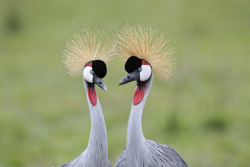African birds reveal climate change impacts
The 'Climate change and birds in the African savannah' (SAVBIRD) project aimed to identify and understand the processes that drive changes to the geographical areas (ranges) that are home to species of east African savannah birds. The research investigated how recent changes in distribution of 139 Tanzanian savannah bird species were connected to climate change, protected area status and land degradation. SAVBIRD used a statistical approach to develop and apply new methodologies for analysing the distribution of species and distribution changes, which can be applied to any region of the world. In addition, a field-based approach focused on understanding the specific mechanisms responsible for changing the range distribution of birds in Tanzania's savannahs. Project work also found that recent studies uncertainty has often been underestimated in models estimating species distribution. SAVBIRD therefore identified and developed areas where the creation of new statistical tools could improve predictions from distribution models now and in future work. Methods for the analysis of data where no direct measure of observer effort was available were also investigated. Great care must be taken when modelling distributions as a lack of records could merely be because no one visited a particular area to search for species. The SAVBIRD project developed a new technique for modelling distributions under such conditions, which, in tests using simulated data, is a significant improvement on current methods. A paper describing these methods was drafted. Field research was based on observation data that were fed into the model and applied using the new methods in order to better understand recent changes to the distribution of Tanzanian savannah birds. The effect of climate change on protected areas is one of the most important questions in conservation. SAVBIRD findings suggest that climate-driven shifts in species distribution leave protected areas impoverished and species without adequate protection. However, other results suggest that intact ecosystems within protected areas will be able to resist change. The project also found the first evidence of climate-driven range shifts for an African bird community and showed furthermore that distribution changes are related to protected area status and the degree of land degradation. Importantly, the SAVBIRD project concluded that maintenance of protected areas is the best conservation response to climate and environmental change. Project findings were widely shared with conservation managers and climate change policymakers in Tanzania and beyond with the aim of protecting biodiversity from the effects of climate change.







